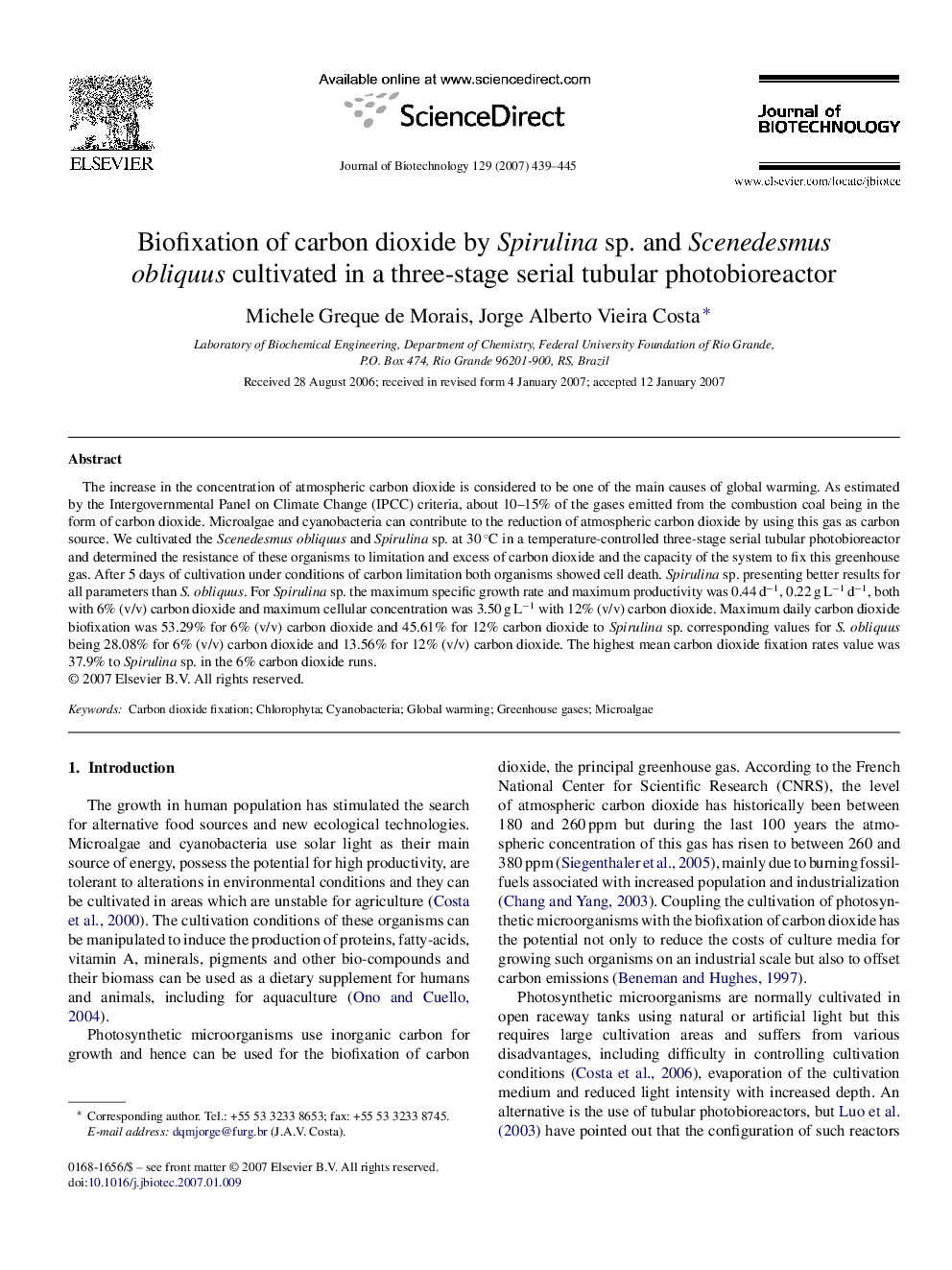| Article ID | Journal | Published Year | Pages | File Type |
|---|---|---|---|---|
| 6492299 | Journal of Biotechnology | 2007 | 7 Pages |
Abstract
The increase in the concentration of atmospheric carbon dioxide is considered to be one of the main causes of global warming. As estimated by the Intergovernmental Panel on Climate Change (IPCC) criteria, about 10-15% of the gases emitted from the combustion coal being in the form of carbon dioxide. Microalgae and cyanobacteria can contribute to the reduction of atmospheric carbon dioxide by using this gas as carbon source. We cultivated the Scenedesmus obliquus and Spirulina sp. at 30 °C in a temperature-controlled three-stage serial tubular photobioreactor and determined the resistance of these organisms to limitation and excess of carbon dioxide and the capacity of the system to fix this greenhouse gas. After 5 days of cultivation under conditions of carbon limitation both organisms showed cell death. Spirulina sp. presenting better results for all parameters than S. obliquus. For Spirulina sp. the maximum specific growth rate and maximum productivity was 0.44 dâ1, 0.22 g Lâ1 dâ1, both with 6% (v/v) carbon dioxide and maximum cellular concentration was 3.50 g Lâ1 with 12% (v/v) carbon dioxide. Maximum daily carbon dioxide biofixation was 53.29% for 6% (v/v) carbon dioxide and 45.61% for 12% carbon dioxide to Spirulina sp. corresponding values for S. obliquus being 28.08% for 6% (v/v) carbon dioxide and 13.56% for 12% (v/v) carbon dioxide. The highest mean carbon dioxide fixation rates value was 37.9% to Spirulina sp. in the 6% carbon dioxide runs.
Related Topics
Physical Sciences and Engineering
Chemical Engineering
Bioengineering
Authors
Michele Greque de Morais, Jorge Alberto Vieira Costa,
